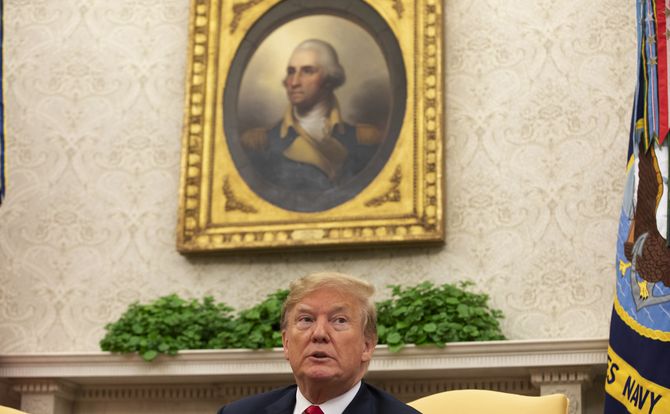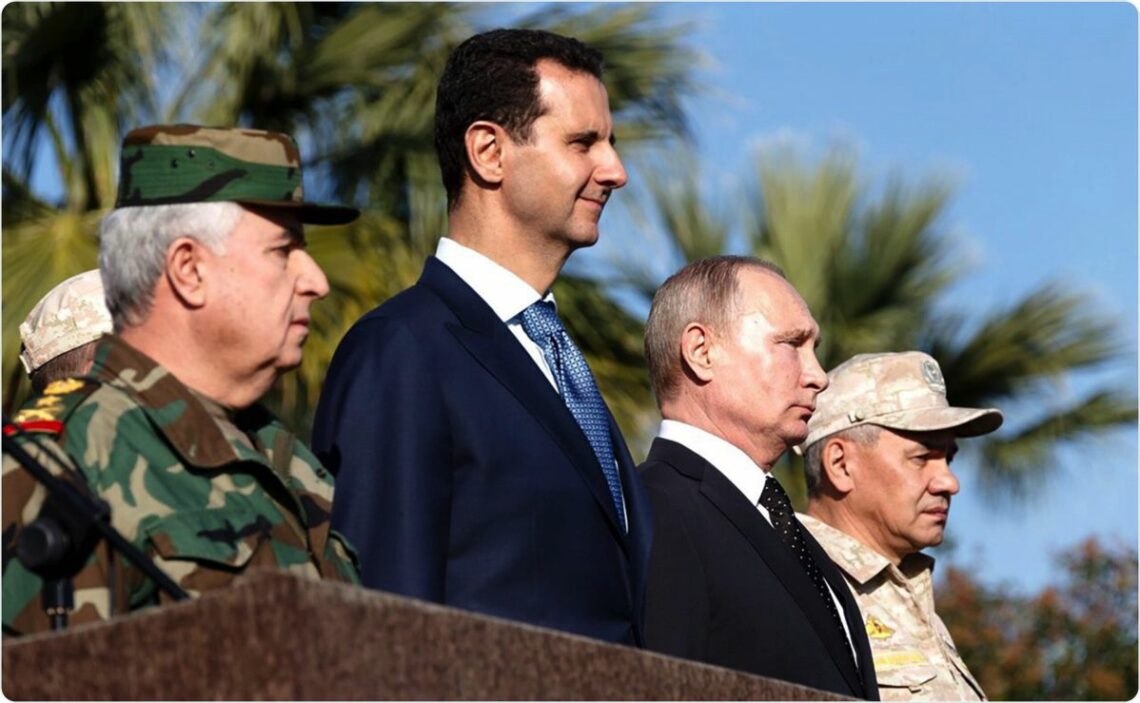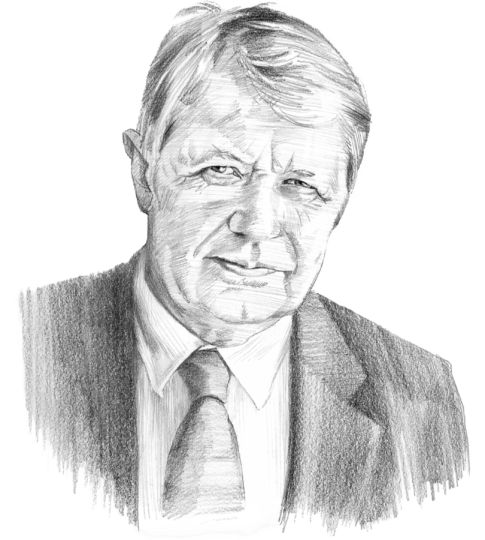Withdrawal from Syria: George Washington’s warning revisited
U.S. President Donald Trump’s decision of troops withdrawal from Syria was neither a bolt from the blue nor a departure from his predecessor’s strategy. The announcement allowed a more stable configuration to emerge in the Middle East.

In a nutshell
- The U.S. pullout from Syria seems to be part of a wider regional de-escalation
- Russia has established itself as a central moderating power in the Middle East
- Far from erratic, the move was consistent with a long American policy tradition
- In the long term, a less encumbered U.S. may become a more effective global actor
During the last week of 2018, the Middle East was swept by a series of unexpected moves. Syrian Kurds “invited” President Bashar al-Assad’s government to reassume control of the country’s northeast, which they had governed as an autonomous entity, Rojava, since 2016. The step was taken as a last-ditch effort to avert a Turkish invasion. Until now, Kurdish control of this area had been ensured by military and political support from the United States. Yet Ankara considered the Kurdish autonomy to be a terrorist organization, even as it provided the boots on the ground for the U.S. campaign against Daesh, or Islamic State (IS).
Lesser evil
On December 29, Russia and Turkey agreed to coordinate their ground operations in Syria after high-level consultations. The move related to Turkey’s declared intention of invading Rojava. At this stage, the U.S., Russia, Turkey and President Assad all agreed that Daesh must be completely eradicated, but their assessments of the organization’s strength and its chances of making a comeback varied widely.
Russia’s interest was to back Mr. Assad. As Russian Foreign Minister Sergei Lavrov declared before meeting with his Turkish counterpart, Moscow would consider Turkish military intervention “in the perspective of protection for Syria’s territorial integrity.”
Turkey aimed to remove a presumed Kurdish threat from its border. Restoring the Assad regime’s control over Rojava seemed to be the lesser evil, even as it gave Damascus control of oil facilities and other resources in the Kurdish territories. Most importantly, it averted the possibility of a direct U.S.-Turkish conflict while strengthening Russian President Vladimir Putin’s negotiating position vis-a-vis Washington. Mr. Putin’s offer to engage in more frequent consultations with U.S. President Donald Trump underlined his eye-to-eye ambitions without making any concessions that could have compromised Russian interests.
In hindsight, even Iran’s consent on December 18 to implementing the Stockholm agreement on Yemen by having Houthi rebels surrender control of the Red Sea port of Hodeida looks like a de-escalation step to calm both Saudi Arabia and Israel.
Assad in charge
What to make of these developments? Potentially, the Assad regime is back in charge of Syria’s contested northeast without a shot fired. The U.S. no longer needs to protect the Kurds, so long as Damascus does not forego the opportunity to peacefully reintegrate them. All parties are united against IS, which is no longer a threat. In future negotiations on a comprehensive settlement in Syria, President Assad will be in charge, no longer contested by political opponents with foreign backing.
With foreign troops likely to withdraw from Syria, there will be more opportunities for regional conciliation.
Russia’s interest is likely to prevent Iran from dragging the U.S., Israel and Saudi Arabia back into a confrontation over Syria. Instead, Moscow will seek to establish itself as the central moderating political power – building on the momentum achieved in Geneva, Astana and Vienna. It will be the focus of high-profile diplomacy, while the European powers and the European Union, at least for the time being, will remain on the sidelines – until they are asked to help pay the costs of reconstruction.
With foreign troops likely to withdraw from Syria, there will be more opportunities for regional conciliation. Israel is already engaged in a back-channel process with Arab countries. Saudi Arabia will likely soften its stance, which had become increasingly bellicose prior to journalist Jamal Khashoggi’s murder. This, in turn, may lessen Riyadh’s open hostility toward Iran. The Stockholm agreement on creating a demilitarized zone in Yemen is early evidence in that regard.
Mistaken impression
It is surprising how many things fell into place in the region and even between the major outside powers after just one decision – President Trump’s announcement on December 19 that he would withdraw American troops from Syria.
The timing certainly came as a surprise. It was the subject of controversy within the U.S. government, both over the withdrawal and the timing. After he was overruled, Defense Secretary James Mattis said he would step down on Feb. 28. – but Mr. Trump cut this orderly transition short, swiftly replacing him with Deputy Defense Secretary Patrick Shanahan on January 3.
The drama over General Mattis’s departure generated the impression – reinforced by the media, political opponents and even allies – that the decision had come out of the blue. In fact, the president seems to have prepared well in advance to replace the defense secretary, who had been his leading in-house opponent on important foreign policy issues. The choice of Mr. Shanahan allowed the White House to avoid Senate confirmation meetings at an awkward juncture, during a government shutdown fight with Congress over funding for a wall along the border with Mexico.
What exactly was Mr. Trump withdrawing? The 2,000 American troops in Syria (not including air assets based in other countries) are mostly Special Forces operatives responsible for training the Syrian Democratic Forces (SDF), whose backbone are the Kurdish People’s Protection Units (YPG), or engineers and other support units. Unlike U.S. air power, they are not tasked with direct combat. Their primary role was to help command, supply and reinforce the SDF for the offensives that retook Manbij, Raqqa and other critical cities from IS. In addition, the presence of 2,000 mostly noncombat American troops in Syria acted as a political threshold that discouraged warring parties from escalating the conflict. Hence the chorus of criticism that followed President Trump’s decision to withdraw them.

Mr. Trump, however, was clearly acting from a different rationale. Back in 2016, his campaign statements made clear that he would bring the troops home and that he had no interest in owning the endgame in Syria. Almost exactly four years ago, President Barack Obama had been prepared to take the same decision, albeit under different political circumstances. Mr. Obama, too, did not regard the U.S. military presence in Syria as essential. While more aware of concerns about multilateralism, his strategic priorities resembled Mr. Trump’s – to rebuild the U.S. and concentrate on China.
This underlying continuity can be overlooked in the dominant (and in many respects accurate) narrative of the current administration seeking to reverse Mr. Obama’s policies. President Trump justified his decision by his long-held view that the U.S. must no longer serve as the world’s policeman – a position often held in American political debates over the past century.
Circling back
Ever since President George Washington’s Farewell Address in 1796, avoiding foreign entanglements through permanent alliances and enemies had been part of the American political DNA. Only the Second World War and the dramatic geopolitical changes it brought, along with the massive predominance of American military and industrial power, reduced the appeal of this option. Its demise was sealed by the alliance system erected by Secretary of State John Foster Dulles in the early 1950s. The intensifying Cold War with the Soviet Union and the collapse of the British and French colonial empires drew the U.S. increasingly into the role of a stakeholder and global sheriff.
The Vietnam War showed the risks of this new status for the U.S. When President George W. Bush launched Operation Iraqi Freedom in 2003, the U.S. was drawn into a Middle Eastern quagmire from which his two successors have struggled to extricate the country – hampered by the public’s growing disenchantment and a lack of strategic vision.
The next phase, toward moderate reconciliation, will be driven by Russia, Turkey and local players – including Egypt, Iraq and Syria.
Major crises almost always have multiple and often disconnected causes. But President Bush’s decision to invade Iraq marked the point when it became virtually impossible to stabilize the Middle East through traditional diplomacy. In hindsight, this elevates to an iron law Friedrich Schiller’s epigram: “This is the curse of every evil deed that, propagating still, it brings forth evil.”
Even as President Trump sought to reverse some of his predecessor’s achievements, he circled back to President Obama’s own 2011 announcement – also two years after entering office – that he would end the U.S. military presence in Iraq. And just as Mr. Obama was forced to rescind that promise with the rise of Daesh, so Mr. Trump almost immediately went back on his own pledge, perhaps without even noticing it.
During a Christmas visit to the troops in Iraq, he announced that a downsized but still substantial U.S. contingent would remain in that country – which would serve as a platform for American military intervention in the region if such a need arises. This was stated without any consultation with or confirmation from Iraq’s new government. And on his way back, he made a surprise stopover at the Ramstein Air Force base in Germany, signaling that the U.S. intends to preserve the means to project force globally.
Redefined reach
These gestures can be understood as needed reassurance to U.S. allies in the Middle East and Europe. But the demonstrable lack of a cohesive strategy behind it, one that allies could share, casts serious doubts on the U.S.’s dependability as a global partner. To quote from a recent essay in Foreign Affairs, Washington is locked in “a kind of Middle Eastern purgatory – too distracted by regional crises to pivot to other global priorities, but not invested enough to move the region in a better direction.”
A few policy considerations flow from this:
- A negligible change in U.S. forward deployments has set in motion an astonishing number of interacting developments
- The repercussions of these seemingly minor adjustments for local balances of power, coalitions and strategies may be large and unpredictable
- A political settlement in Syria no longer seems out of reach, although it can be assumed from the start that the resulting federal system will be fragile
The next phase, toward moderate reconciliation, will be driven by Russia, Turkey and local players – including Egypt, Iraq and Syria. That leaves the U.S. waiting in the wings, though not necessarily for long. Once a peace settlement is reached, other serious challenges will arise. American power will regain its importance, if only because no other player (save Europe) has the resources to support postwar reconstruction. It seems natural to predict that the U.S. will then resume its central role in the Middle East, even after losing many geopolitical assets in the region.
Iranian endgame
Leading from behind could thus become a viable political strategy for the U.S., even if it differs from the Obama administration’s crisis management and seems hard to reconcile with President Trump’s own beliefs. The peace plan associated with Jared Kushner, Mr. Trump’s son-in-law and senior advisor, could even be realized, provided the U.S. finds ways to rediscover and exploit what Henry Kissinger called the “geopolitical importance of Iran.”
As Henry Kissinger observed, Iran’s pivotal position forces any administration to seek good relations with its rulers.
As Dr. Kissinger observed, that country’s pivotal position must “impel any administration into seeking good relations with whatever group governs Iran.” President Trump has shown before, however irritatingly at times, that he does not shy away from strategic reversals. Current tensions over the U.S. withdrawal from the Joint Comprehensive Plan of action (JCPOA) – the Iran nuclear deal – seem to preclude any hope in this area. But it would be a move that might eventually allow interests to align on a global level, and whose boldness is not alien to Mr. Trump’s ambitions. The possibility of a more conciliatory Israeli government after the April 2019 general elections could also become a facilitator.
There is a role for Europe to play in this global endeavor. But a lot must happen first, including a correct reading of this shift in U.S. foreign policy. While Mr. Trump’s decision to withdraw from Syria has few consequences for Europe, a broadening of this process and an eventual Iranian endgame would have a direct impact on European interests – above all concerning the Iranian sanctions regime and by relieving migration pressure. This would call for a new bargain between the U.S. and Europe that could give the latter greater leverage in the Middle East.
To borrow once more from Henry Kissinger, this time from his book World Order (2014), the quest for balance in U.S. foreign policy “between the poles of overconfidence and introspection is unending. What it does not permit is withdrawal.”








